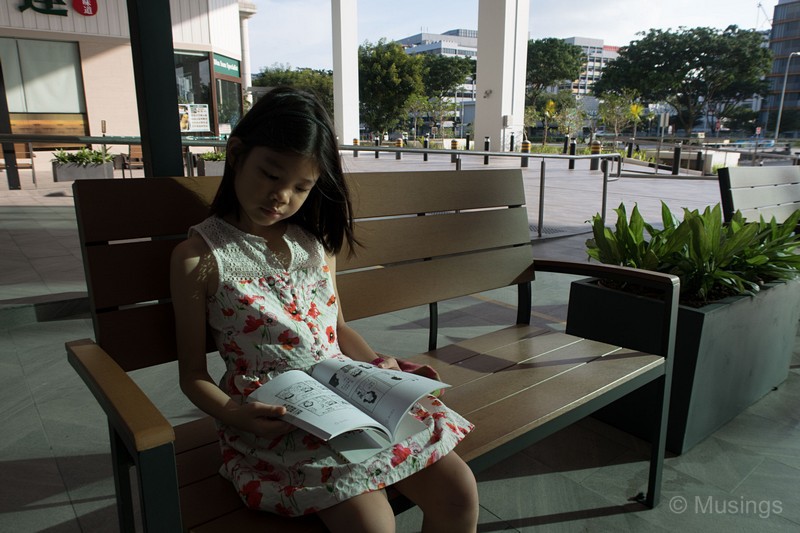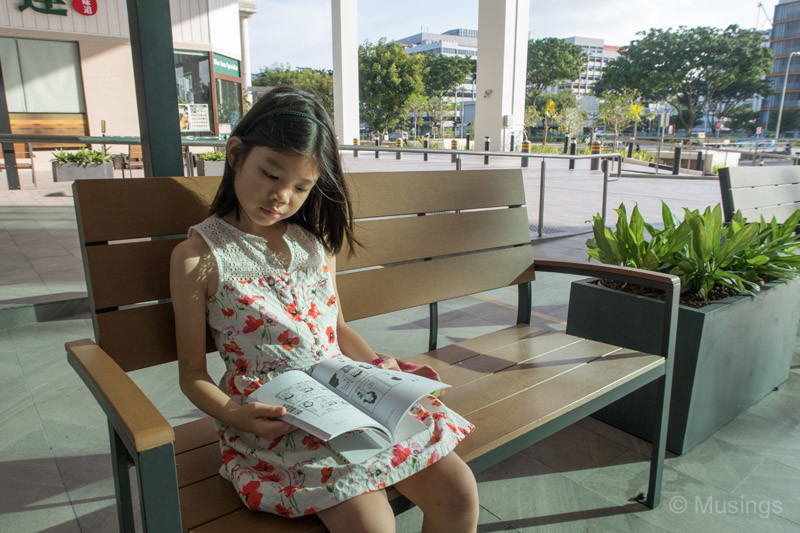Most enthusiast cameras – whether compact, DSLR or mirrorless – and also the more expensive smartphones, support RAW photography. I moved on to take pictures only in RAW during my Nikon D300 days ten years ago, and it’s hard to go back to JPG – having experienced the sheer versatility you get from post-processing RAW images.
Two pictures below to illustrate how much imaging information you can retrieve through RAW. The left image in each set is a JPG, and the right an edited RAW.
Below: Using old married couple: the E-PL6 and 17mm f1.8 during weekend brunch at Swensens, one of our usual hangouts on account that the kids eat for free with adults. The RAW image is on the right and adjusted to taste: -95 Highlights, +3 Shadows. Notice that the white porcelain utensils have noticeably better definition, and also the top layer of the wife’s french toast doesn’t look like a gooey mess. The white plastic spoon near the image’s center can also be better seen now.


Next and below: using the G7X II, and just over the last weekend at 18 Tai Seng – a small mall with three Michelin starred restaurants within meters of each other. This was on a very sunny late afternoon, and the background – Upper Paya Lebar Road actually – is very well-lit, but the JPG is unable to accurately resolve Hannah in the foreground and under shade. Lighting conditions like these are always challenging for any camera, short of using external light sources, or having the subject sit in a different posture or place. No go on that though as H liked this particular bench! The right image was adjusted to taste from the RAW: +0.75 Exposure, -50 Highlights, +70 Shadows, +20 Whites. The GX7 II has a fairly modest dynamic range, and how much detail I can retrieve from working on the RAW version is limited compared to a mirrorless or a full-frame camera. Still, I did an overall exposure increase, added some whites and shadows so that Hannah’s face can be seen – and at the same time, countered with a reduction in highlights so that the background doesn’t get completely blown-out. Basically, the earlier JPG above for me would had been unusable, but this edited RAW is now perfectly fine.


There are challenges involved when working with this format, though over the years some of these issues have become less of a hindrance. For example, images typically take up a lot more storage space – both on the memory card in the camera, and also on storage/archival devices. A typical RAW file, depending on whether it’s compressed, can be 3-4 times larger than a JPG equivalent. But the per gigabyte cost of archival storage – e.g. portable hard drives – is always dropping, and will continue to do so. The cost of memory cards are also dropping over time, and even if the price drops aren’t as quick as for archival storage, memory cards are also now at a point where you can easily shoot several days of vacation photos before you have to swap them out for a unfilled card, or transfer your images to archival storage.
RAW files are also proprietary to the camera manufacturer, and specific to the model. That can indeed pose challenges, as it forces enthusiasts to find the appropriate software tools to manipulate and edit them. There is a workaround of course: Adobe has the Digital Negative standard and it distributes its software converter for free. I’ve taken to converting my GX85 images to the DNG format, and reckon that at some point, I’ll also do so for the roughly 80,000 RAW photos I’ve stored on archival over the years.
Recent comments